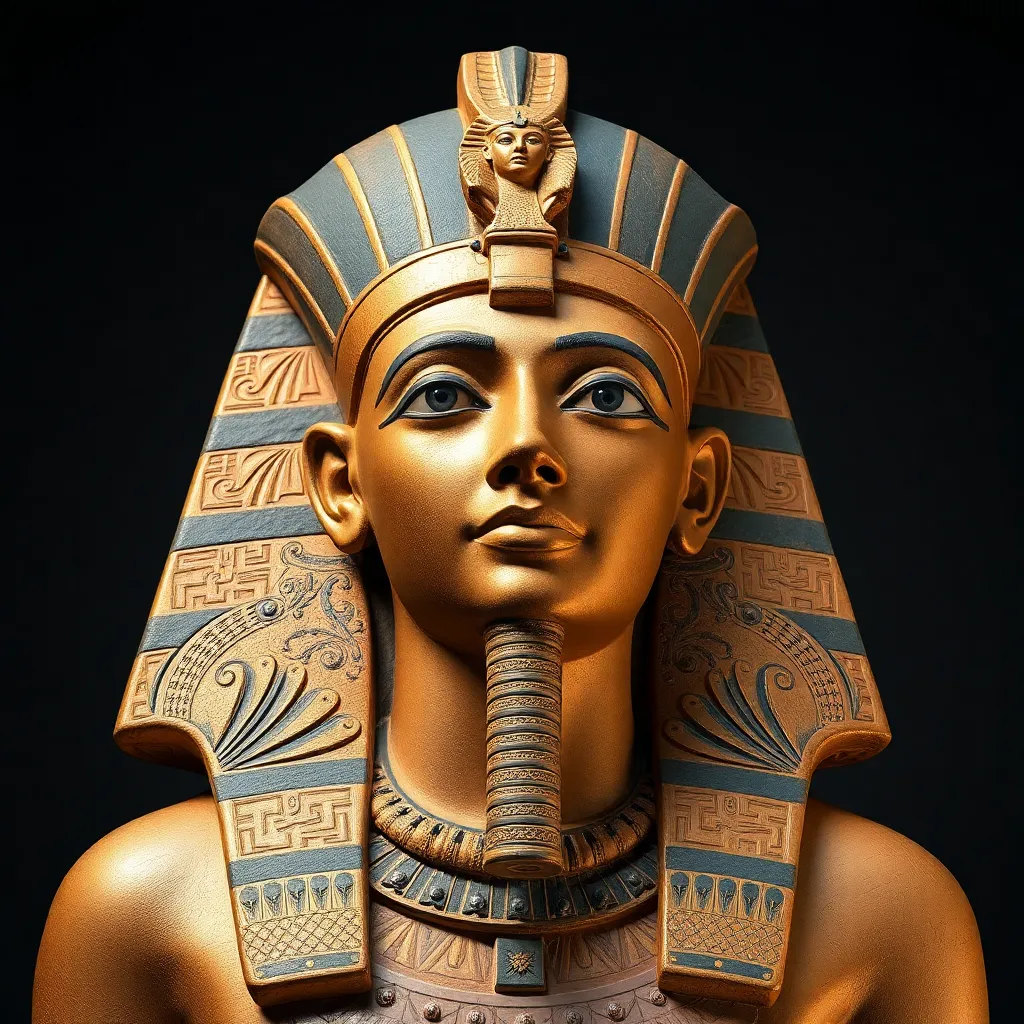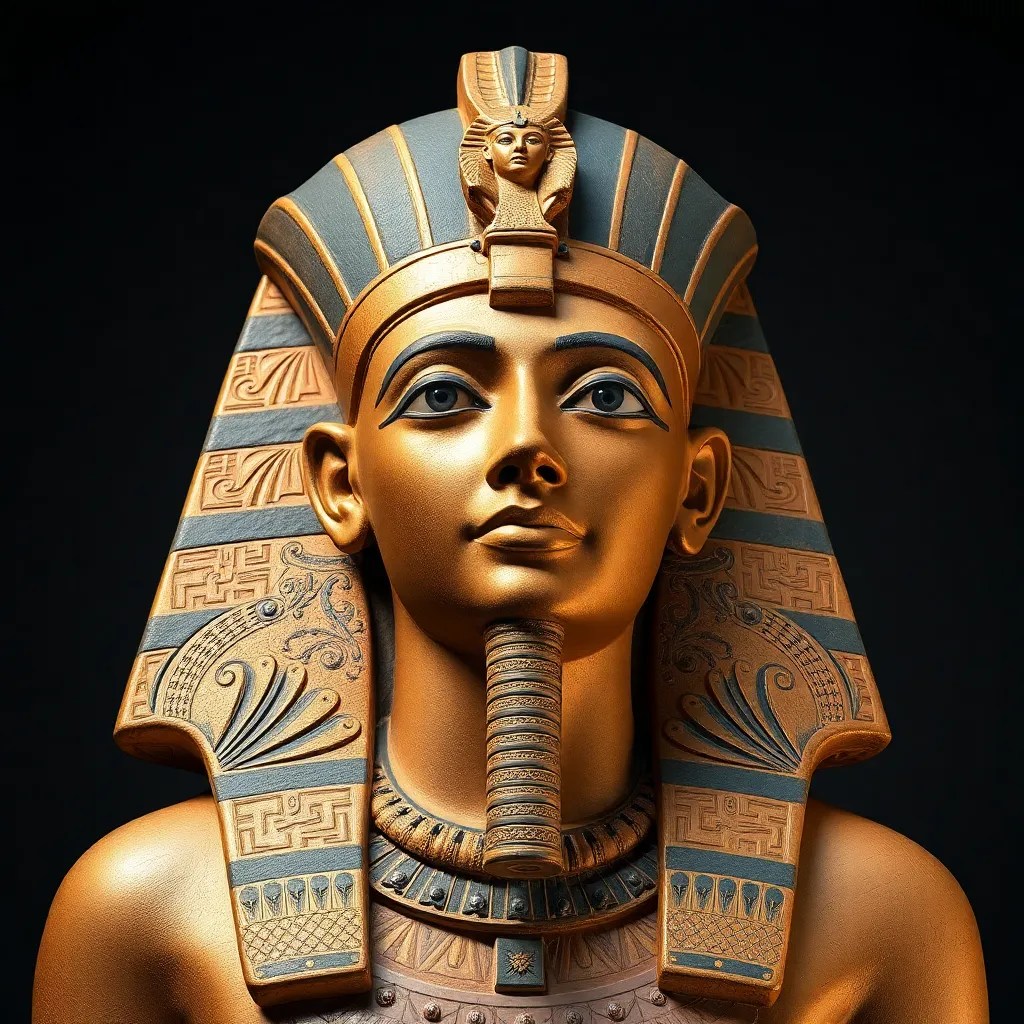Atenism’s Artistic Revolution: The Unique Style of Akhenaten’s Era
I. Introduction
Akhenaten’s reign (circa 1353-1336 BCE) marked a significant turning point in ancient Egyptian history, particularly through the establishment of Atenism, a religious movement centered on the worship of the sun disc, Aten. This period is notable not only for its theological innovations but also for its profound impact on art and culture. The artistic expressions of Akhenaten’s era reflect a radical departure from traditional Egyptian styles, embodying the cultural shift and ideological changes of the time.
Art during Akhenaten’s reign serves as a crucial lens through which we can understand the broader changes occurring in society. The purpose of this article is to explore the unique artistic style of Akhenaten’s era, examining its characteristics, symbolism, and the context in which it developed.
II. Historical Context of Atenism
Before Akhenaten, ancient Egyptian religion was polytheistic, featuring a pantheon of gods and elaborate rituals aimed at appeasing these deities. The worship of gods such as Amun, Isis, and Osiris dominated the religious landscape, with a strong emphasis on the afterlife and the afterworld’s significance.
Atenism emerged as a monotheistic alternative, promoting the worship of the Aten as the sole god. This philosophical shift not only redefined religious practices but also influenced artistic expressions. Akhenaten’s transformation of religious thought marked a radical change in how the divine was represented in art and culture, moving towards a more personal and less hierarchical relationship with the divine.
III. Key Characteristics of Akhenaten’s Artistic Style
The artistic style of Akhenaten’s era is characterized by a deliberate departure from traditional Egyptian art forms. This new direction can be summarized in several key features:
- Realism and Naturalism: Unlike the idealized forms typical of earlier periods, Akhenaten’s art emphasized realistic and naturalistic representations of figures, particularly in the depiction of the royal family.
- Innovative Use of Materials: Artists began using new materials and techniques, including more vibrant colors in wall paintings and a greater variety of stone in sculptures. This allowed for greater expression and detail.
- Depiction of Emotion: The art of this period often conveys emotion and intimacy, particularly in scenes featuring Akhenaten, his wife Nefertiti, and their children.
IV. Iconography and Symbolism in Atenist Art
Iconography during Akhenaten’s reign was rich with symbolism, reflecting the philosophical underpinnings of Atenism. Key elements include:
- The Aten: The sun disc was often depicted radiating rays ending in hands, symbolizing life and nourishment provided by the sun god.
- Royal Family: Akhenaten and Nefertiti were frequently shown in tender familial scenes, emphasizing their roles as intermediaries between the Aten and the people.
- Nature and the Sun: Artistic themes frequently included natural elements, showcasing the beauty of the world created by the Aten, which was a marked shift from the previous focus on the afterlife.
V. Architecture and Urban Planning in Akhenaten’s Era
Akhenaten’s reign was also notable for significant architectural innovations, particularly the construction of Akhetaten, known today as Amarna. This new capital city represented a radical shift in urban planning and architectural style:
- City Layout: Akhetaten was designed with open spaces and a focus on the sun, integrating natural light into its temples and public areas.
- Temples and Public Spaces: The architecture included large temples dedicated to the Aten, which were open to the sky, symbolizing the direct relationship between the sun and the people.
- Artistic Integration: The artistic style of the period was seamlessly integrated into the architecture, with wall reliefs and sculptures that complemented the overall aesthetic of the city.
VI. The Role of Artisans and Artists in Akhenaten’s Court
The status and function of artists during Akhenaten’s reign underwent notable changes:
- Elevated Status: Artists gained recognition and were often commissioned for significant works, reflecting their importance in the new religious and cultural context.
- Collaborative Practices: Evidence suggests that artists worked in workshops, collaborating on projects and sharing techniques, leading to a flourishing of creativity.
- Notable Artists: Certain artisans, such as the sculptor Thutmose, are known for their contributions to the artistic legacy of Atenism, creating iconic pieces that embody the era’s style.
VII. The Decline of Atenism and Its Artistic Legacy
The decline of Atenism and the subsequent return to traditional polytheism occurred swiftly after Akhenaten’s death. Several factors contributed to this decline:
- Political Instability: The political turmoil following Akhenaten’s reign led to a rejection of his reforms by subsequent rulers.
- Restoration of Traditional Worship: Rulers like Tutankhamun reinstated the worship of the traditional pantheon, leading to the erasure of Atenist symbols and practices.
- Artistic Regression: The art that followed Akhenaten’s reign reverted to traditional styles, marking a loss of the innovative spirit that characterized the Atenist period.
Despite this decline, the artistic revolution initiated by Akhenaten left a lasting influence on subsequent periods of Egyptian art, paving the way for future explorations of realism and emotional expression in art.
VIII. Conclusion
In summary, Akhenaten’s artistic revolution marked a pivotal moment in ancient Egyptian history, characterized by a unique style that emphasized realism, naturalism, and a profound connection to the divine through the sun, Aten. The integration of art, architecture, and urban planning during this period reflects the broader cultural shifts initiated by Atenism.
The significance of Akhenaten’s artistic innovations continues to resonate, serving as a testament to the transformative power of art in shaping cultural identity and religious thought. The legacy of Atenism endures, influencing not only the art of ancient Egypt but also inspiring generations of artists and historians in their exploration of the rich tapestry of human expression.




